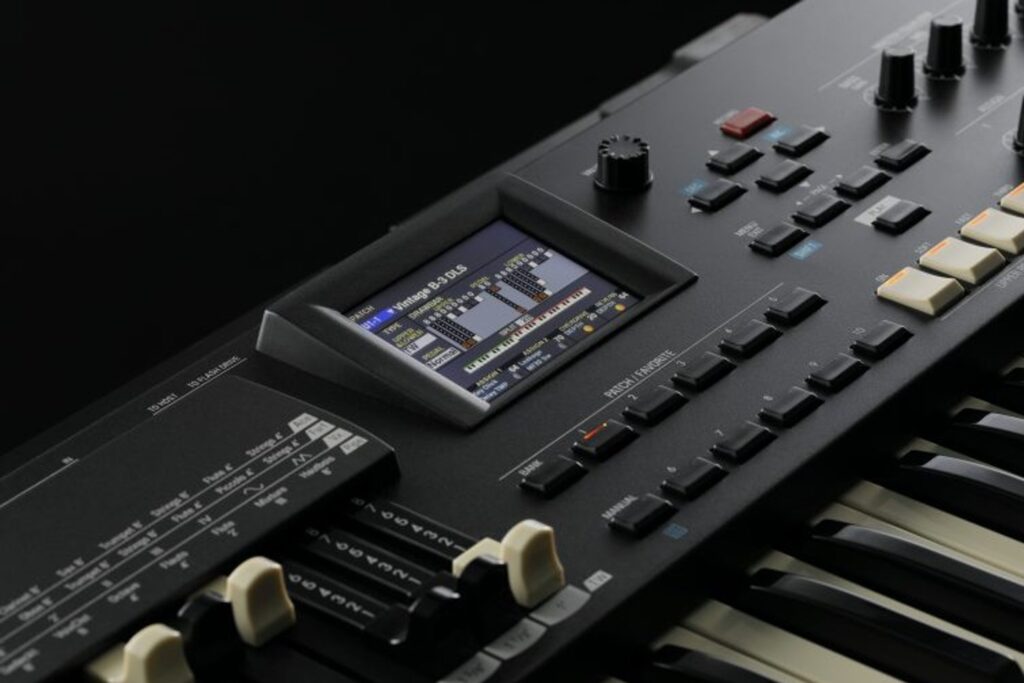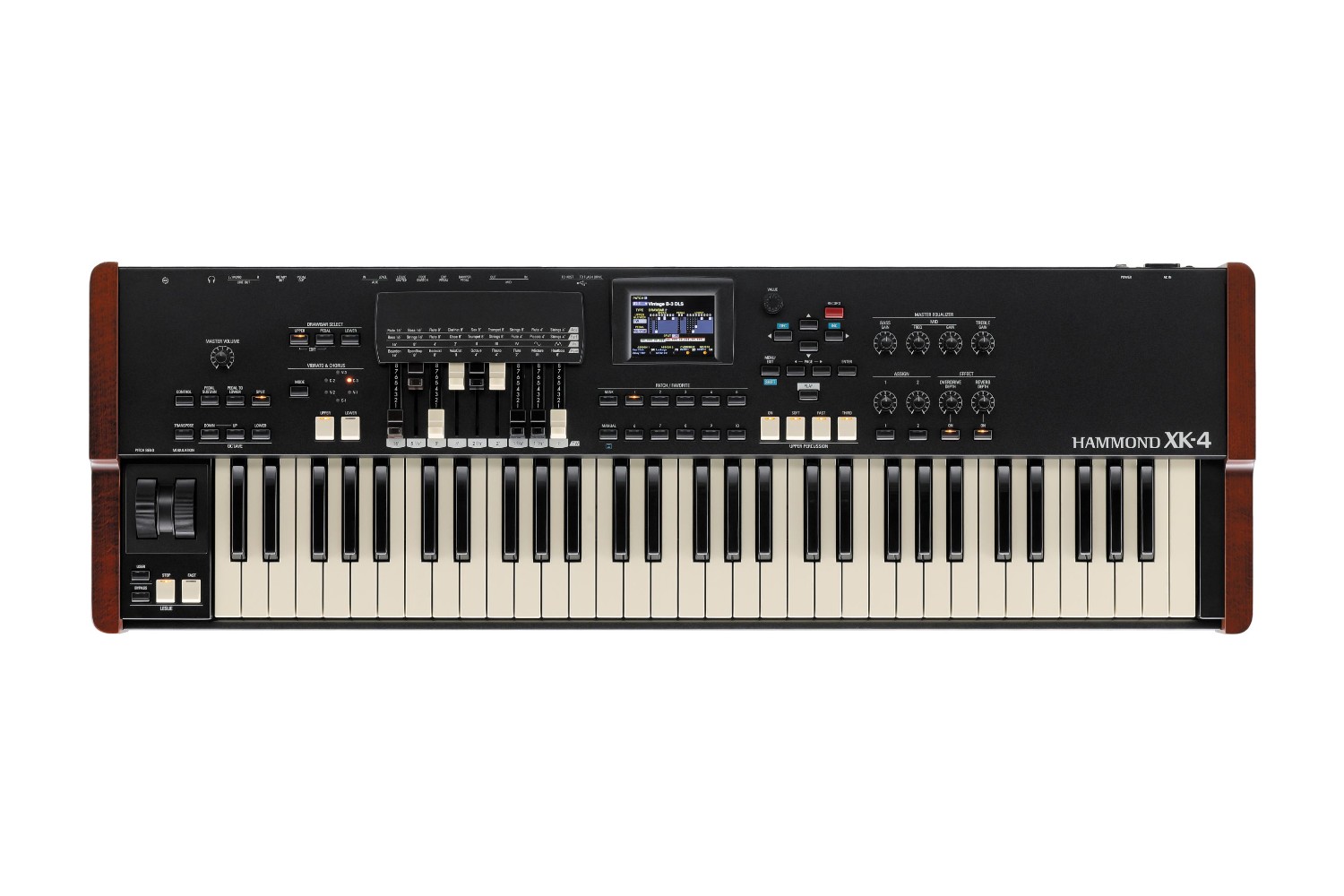Hammond XK-4 | Bernie’s Music Land | RRP $4,395.00
For over a century, Hammond has been a name synonymous with musical innovation and excellence. This iconic musical instrument company, founded by Laurens Hammond in 1934, has left an indelible mark on the world of music, pioneering the development of the Hammond organ and shaping the soundscape of countless genres. The Hammond organ, with its distinctive tonal qualities and rich harmonic content, quickly became a staple in churches, jazz clubs, rock bands, and studios alike. Its invention marked a revolutionary departure from traditional pipe organs, offering musicians a portable and versatile instrument that could replicate the grandeur of a cathedral organ or deliver the gritty, soulful tones of a jazz combo.
Read more gear reviews here.
The Hammond XK-4 uses an advanced DSP replication of the behaviour of the tonewheel generator found in classic Hammond organs and accurately reproduces the harmonics and overtones generated by the tonewheels, providing that unmistakable warm and vibrant sound that has made Hammond organs legendary. This sets the virtual tonewheel mechanism of the Hammond XK-4 aside from every other replication or modelling software, as the accuracy of the Hammond XK-4 is off the charts. It would also be remiss of me not to mention the spectacular Leslie DSP emulation, as well as the ‘matching transformer’ emulation, typical of the rich sound of vintage Hammonds.
The drawbars on the XK-4 can be used to control organ sounds other than the traditional Hammond drawbars. Beyond the tonewheel method of generation of the original Hammond organ, intended to duplicate the purpose of a pipe organ, the Hammond XK-4 also has DSP modelling of three different transistor-style circuits typical of a British Vox combo organ, combining triangle and square waves using several footages, a replication of the Farfisa combo organ from Italy and the Japanese Ace combo organ, which both use tablets to combine sound waves, which are then filtered to produce different tones. Beyond the transistor organ modelling the Hammond XK-4 also has an excellent Pipe organ DSP model, using the drawbars as drawstops and stop tablets to create pipe organ registrations.
The Hammond XK-4 comes with two impressive banks of multi-FX, the first bank contains a tremolo, wah, ring modulation and a compressor. The tremolo comes with adjustable waveform options (triangle, square, saw down, sample, hold, and dull square) as well as being able to adjust whether the phase of modulation resets every time a key is pressed, or whether it intercepts the existing LFO. The wah mode is a typical wah and can have the source changed to be used via an expression pedal, or the input of the sound engine, creating a sort of envelope filter or auto-wah.
The ring modulation, which is a DSP effect whereby two different frequencies are mixed in such a way that eliminates the individual frequencies themselves, leaving only the sum and the difference of the two frequencies. And with adjustable sources, sensitivity and mix settings, the bell-like and metallic tone of the ring mod fits right in with the suite of effects on the Hammond XK-4
The compressor that comes with the Hammond XK-4 has an obscenely high level of functionality and depth of control when compared to compressors commonly found on other stage pianos and synths. With ratio, threshold level, makeup gain, attack, release rate and also delay time (functioning as a lookahead style feature) the compressor allows for as much tailoring of its effect as a decent rack mount and sounds very competent as well.

The list doesn’t end here however, as the Hammond XK-4 comes equipped with a second bank of multi-FX including auto-pan, phase flanger, chorus and delay. These effects are placed after the expression and overdrive effects in the signal chain. The auto pan feature (which is not available when using a Leslie cabinet or a monophonic speaker) has the same adjustable waveform options as before, as well as the necessary rate and depth settings, and allows for a healthy level of control and quite a nuanced auto-pan.
The phaser and flanger operate in very similar fashions, as phasers and flangers are wont to do, with parallel (mix) feedback (resonance) depth and rate controls, they have a high level of control baked in. The phaser has a manual setting allowing for the targeting of the centre frequency of the phase effect, and you can adjust the complexity or ‘stage’ of the phasing, allowing for more complex tones. On the other hand, the flanger has a delay and HPF setting not found on the phaser.
The chorus is brilliant and shimmery, well suited to complimenting the organ’s tones, and with a suite of controls such as rate, depth, resonance, delay, and pre-delay (all in parallel) the modulation package on the Hammond XK-4 is well rounded out. The last feature on the multi-FX 2 rack is a delay feature, with mix, feedback (number of repetitions, and time (10-1000ms) controls, as well as left to right (and reverse) types of delay, which are again not available when using the Leslie cabinet or in a monophonic speaker, for obvious reasons.
The Hammond XK-4 has stepped onto the market with very large boots to fill, and is in my eyes, the best modern organ on the market. With an incredible suite of modulation, the best tonewheel DSP emulation in the world, an incredible DSP Leslie replication and the same glorious keyboard (with pitch and mod wheels) found on the other modern Hammonds, the Hammond XK-4 is without a doubt, the best organ you can buy at the moment with one manual.
For local enquiries, visit Bernie’s Music Land.







